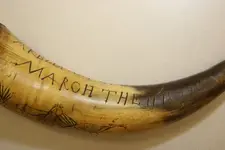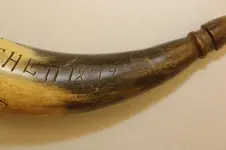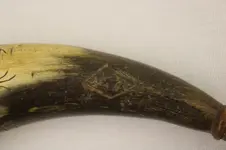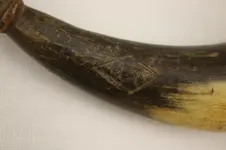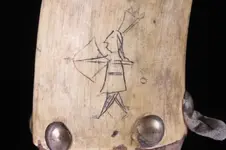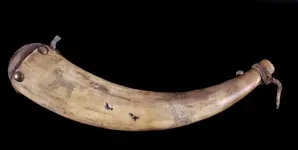HistoryTeacher
Sr. Member
- Joined
- Mar 9, 2017
- Messages
- 312
- Reaction score
- 689
- Golden Thread
- 0
- Location
- North Georgia
- Detector(s) used
- Garrett Ace 400
- Primary Interest:
- All Treasure Hunting
Dear T-neters,
I got this from my family for research a little bit back. I think that they thought that a history teacher would figure it out. I have googled so much that ads for antique powder horns show up in my gmail. I took this R-rated horn to an antique gun and militaria show. Three people offered me $100.00 for it. Its not for sale; I don't own it. All they could tell me was that it looked to be a real animal horn, that 1872 was really too late for making and using a powder horn, and did I know that there were naked girls on there?
What I know: it was in my Grandfather's house. He worked for the Frisco RR from the 1930's to the 1980's. We remember it being in the house at least since the early 1970's. Because he worked for the RR he traveled alot.
The text seems to read "ARBLLPALFERD MARCH THE 11 1872" There is also a diamond (in the dark area) that says "1R7" or "L?1".
It is about 9" long. The large end is about 2"-2.5" across.
There appears to be several figures include people and some mutant birds?
I'd given up on solving it until I saw someone post a picture that I thought was unsolvable. It was solved in 48 hours. Any thoughts?
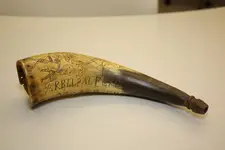
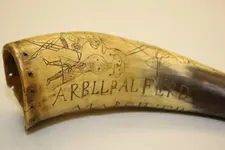
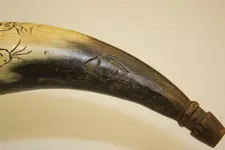
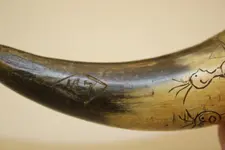
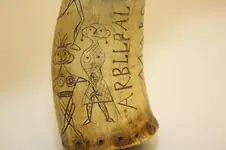
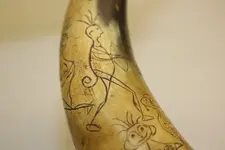
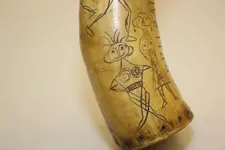
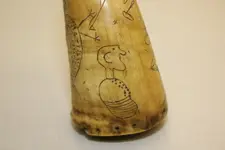
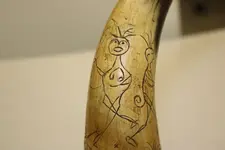
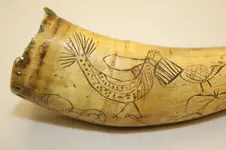
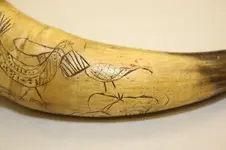
I got this from my family for research a little bit back. I think that they thought that a history teacher would figure it out. I have googled so much that ads for antique powder horns show up in my gmail. I took this R-rated horn to an antique gun and militaria show. Three people offered me $100.00 for it. Its not for sale; I don't own it. All they could tell me was that it looked to be a real animal horn, that 1872 was really too late for making and using a powder horn, and did I know that there were naked girls on there?
What I know: it was in my Grandfather's house. He worked for the Frisco RR from the 1930's to the 1980's. We remember it being in the house at least since the early 1970's. Because he worked for the RR he traveled alot.
The text seems to read "ARBLLPALFERD MARCH THE 11 1872" There is also a diamond (in the dark area) that says "1R7" or "L?1".
It is about 9" long. The large end is about 2"-2.5" across.
There appears to be several figures include people and some mutant birds?
I'd given up on solving it until I saw someone post a picture that I thought was unsolvable. It was solved in 48 hours. Any thoughts?














